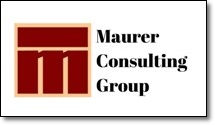May – June, 2022 Volume 18 – Issue 107
Have Your Customers stop calling?
 Did you have a nice flow of new customers going for a while? New prospects were calling regularly. Your conversion rate was pretty high for turning prospects into buyers. Then, nothing but ‘crickets’ or total silence. Customers stopped calling!
Did you have a nice flow of new customers going for a while? New prospects were calling regularly. Your conversion rate was pretty high for turning prospects into buyers. Then, nothing but ‘crickets’ or total silence. Customers stopped calling!
Your normal number of email inquiries and contacts calling drops then dwindles to a complete stop. When customers stop calling, you begin picking up the phone and listening for a dial tone. Have your phone lines died? Maybe your phone battery needs charged. Is the Internet down? No?
Then, what can the problem be, and how can you remedy the situation? Something needs to change, and quickly. How can you shake things up when customers stop calling? It is time to review your firm’s strategies and tactics and make some changes to improve your marketing results. Here are some suggestions for changing your firm’s marketing processes. If you change nothing, nothing will change.
Tactics for when customers stop calling:
1. Ask yourself: Am I only reaching out to my IDEAL prospects? You know who they are. You know what they need from you. They are the ‘hungry’ prospects, ready to buy what you are selling. But, if they don’t hear from you, how will you get them to come back?
 2. Show up where that hungry crowd of buyers hangs out. This means being active and visible on-line and off-line. Clearly define who those people are? Where do they work, what do they do? What are they interested in, and who else is like them? Look for those with the same or at least similar pain points and needs. Then find out where they are all hanging out – social media, online chat groups, live networking groups in your area. You already know where they are not – on your website or calling you.
2. Show up where that hungry crowd of buyers hangs out. This means being active and visible on-line and off-line. Clearly define who those people are? Where do they work, what do they do? What are they interested in, and who else is like them? Look for those with the same or at least similar pain points and needs. Then find out where they are all hanging out – social media, online chat groups, live networking groups in your area. You already know where they are not – on your website or calling you.
3. Create a step-by-step networking plan – targeted on your ideal clients and prospects. LISTEN to what people say they do. What conferences and expositions are they likely to attend? Do they belong to local networking groups? Find out the dates and locations (local or national venues) of the venues and get them on your calendar. One or two conferences a year and four to six local networking venues is a good beginning.
4. Marketing is the fuel that keeps your small business running. Marketing and outreach has to be given extremely high priority, and operate all the time. There is never a ‘time’ for marketing activities, they need to be an ongoing part of your schedule.
5. ‘Every once in a while’ or ‘random’ focus on bringing in new customers will not make your firm grow or succeed. Marketing demands consistency to bring in a steady flow of leads. Don’t wait for calls to come in from prospects, work on attracting them all the time.
6. Consistently use a ‘prospect magnet’ to instantly turn prospects into qualified leads. Create an enticing free offer, not ‘free consultation’. Make it something your ideal prospects can use. A free cheat sheet of useful ideas, an e-book addressing one of their pain points, or a case study about success with a previous customer.
7. Implement four components of highly effective marketing. Social Media does not bring you clients. What you SAY attracts them. Send out enticing messages that fill the following criteria:
- Target your ideal market
- Address challenges of your market sector
- Clearly state outcomes you help achieve
- ALWAYS include a Call to Action
8. Test your marketing options. Social media can be a great marketing channel, but not all of them work for every business. Test each platform for results. Email marketing and newsletters make a big difference. But, just changing the font, an image or color of a call-to-action button can raise or lower opening rates of your messages. Test options; then analyze your results. Go with what works best.
9. Put marketing messages and strategies on ‘Auto Pilot.’ This needs to cover when you are in or out of your office (every page of your website, FB ads, etc.). Be sure there are ways to ‘answer’ all visitors promptly. Hint: think of adding a FAQ page to your website or a chat-bot.
10. Develop a mix of on-line and off-line outreach strategies so there is no relying on just one channel. Your ideal customers may belong to more than just one persona group, or they may have more than one challenge or area of interest. Define the commonalities of ideal customer groups. Then, find places you should show up in person to build relationships, or what social media platforms and groups you need to be participating on.
Conclusion
If your customers stop calling, don’t assume they will pick up in a few days or next week. Review your marketing plan. Decide what still works and what doesn’t seem to get results anymore. Why waste time and money on things that don’t work?
Pay attention to your most powerful marketing options. Then, drop any that are not helping, or barely helping your efforts to attract new customers. Stick with your tried and true, tested marketing strategies and tactics. If you have done your testing and analysis, you will know which work best, and bring results. And, always be alert for new marketing channels and options that could work for your company. Admit it, it makes absolutely no sense to spend any of your time, or budget, pushing out non-working messages and expecting to attract new customers.
If this seems beyond your abilities, get some help to get that phone ringing again. Every day of silence that goes by puts you further and further away from growth and success Contact Terri Maurer via our Contact page to set up a time to talk.







